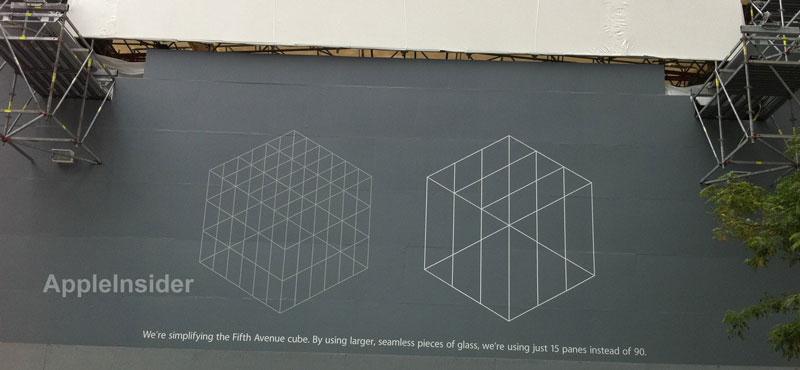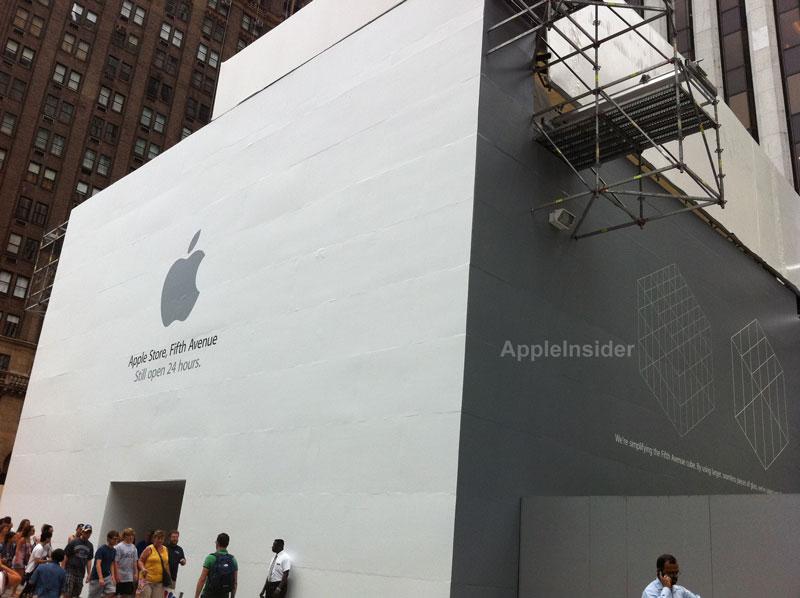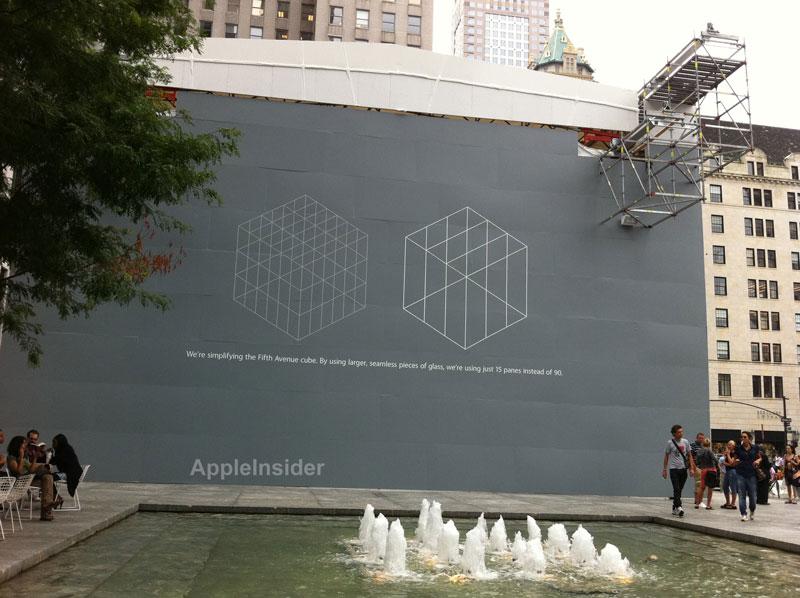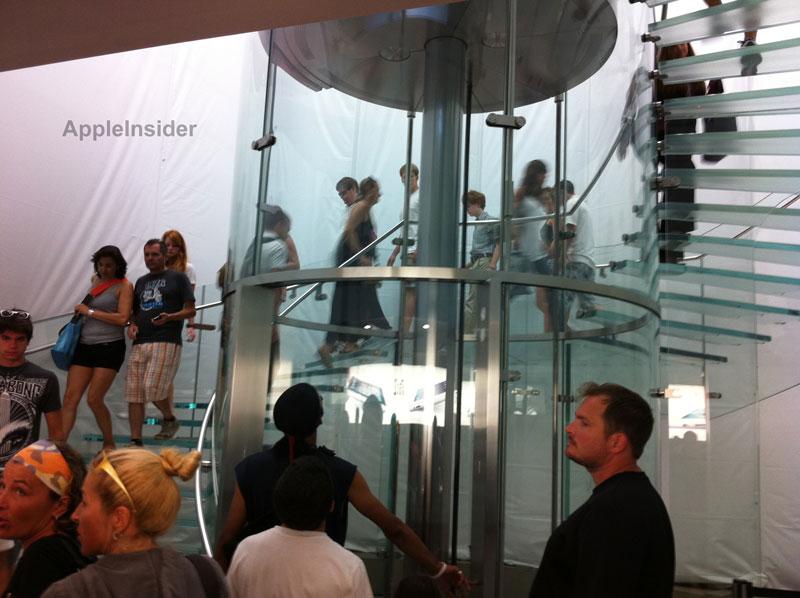This week, Apple posted a new sign at its flagship store in New York City, revealing to passersby the meaning of the major project currently underway. AppleInsider reader Ryan supplied photos of the latest changes.
"We're simplifying the Fifth Avenue Cube," it reads. "By using larger, seamless pieces of glass, we're using just 15 panes instead of 90."
On the other side of the giant temporary structure shielding the public from the construction, an Apple logo is displayed, along with the text: "Apple Store, Fifth Avenue. Still open 24 hours."
Work to replace the 32-foot cube began in June. Permits filed with the New York Department of Buildings show that the entire project will cost Apple $6.7 million, and that construction is expected to be completed by November.
While the project has been underway for a number of weeks, Apple had not previously revealed why the cube was being replaced. This week's notice posted on Fifth Avenue is the first such reveal, indicating the 90 smaller panes of glass previously used will be replaced by 15 massive ones.
Apple shielded the public from the construction by erecting a temporary wall of grey plywood fronting the street. A small gap between the ways served as a pathway for customers to access the staircase that leads to the store below.
Later, as replacement of the cube itself began, Apple constructed, a second, temporary cube made of tarps to cover the original on Fifth Avenue. Users must pass through a makeshift hallway, complete with overhead lights, to enter the underground store.
The structure has been a popular destination since it opened in May of 2006. A recent study found that it is one of the most photographed locations in the entire city.
Apple Chief Executive Steve Jobs personally designed and even paid for the hollow glass structure that serves as the store's entrance. The latest renovations are not the first time the structure has been tweaked: Shortly before its unveiling in 2006, Jobs was said to have been unhappy with some of the materials used to construct the cube, and last-minute changes were made.
 AppleInsider Staff
AppleInsider Staff










-m.jpg)






 Christine McKee
Christine McKee
 Wesley Hilliard
Wesley Hilliard
 Malcolm Owen
Malcolm Owen
 Andrew Orr
Andrew Orr
 William Gallagher
William Gallagher
 Sponsored Content
Sponsored Content









60 Comments
"We're simplifying the Fifth Avenue Cube," it reads. "By using larger, seamless pieces of glass, we're using just 15 panes instead of 90."
Is that really necessary? Seems like a lot of work and expense for very little change in appearance.
Certainly not necessary in the sense of the store being unable to function without it. Building it in the first place wasn?t either?nor is any architecture that serves aesthetic purposes. That?s always optional. At the same time, having?and even improving?a NY landmark does drive business indirectly.
But it seems that it?s more like a kind of hobby project for Jobs! I didn?t realize he paid for it personally.
Just wondering why Steve would personally pay for this. it's not like Apple is short of cash, or anyone would disagree with him.
Just wondering why Steve would personally pay for this. it's not like Apple is short of cash, or anyone would disagree with him.
It's not like he's short of cash either.
I suppose it's a vanity thing, in a good way. As rich folks mature or come fact to face with their own mortality the tendency is to begin thinking of a legacy. The great industrialists of the 19th century funded great urban public architecture; Steve is doing it his way. I wonder if he is hoping that the cube will outlast the store? Sort of like the Eiffel Tower got under the skin of Parisians.
Just wondering why Steve would personally pay for this. it's not like Apple is short of cash, or anyone would disagree with him.
There are many reasons. For instance, not being short on cash doesn't mean that departments with Apple can use as much as they see fit. There could easily have been quotas and limits for multiple reasons that made it advantageous for Jobs to spend the money himself. IT could be as simple as keeping that department from going over budget for the quarter and he may have been reimbursed with interest a few months later. Or perhaps Steve saw it as an iconic piece of art and therefore wanted it to attached more to his name than his company.